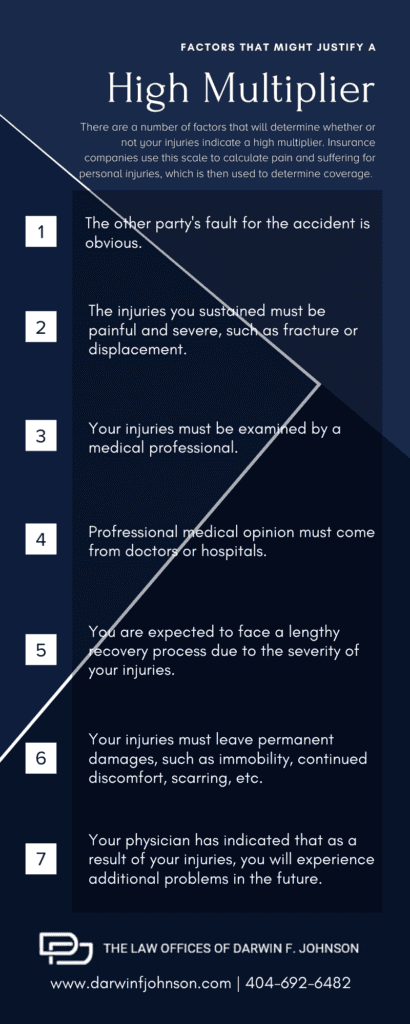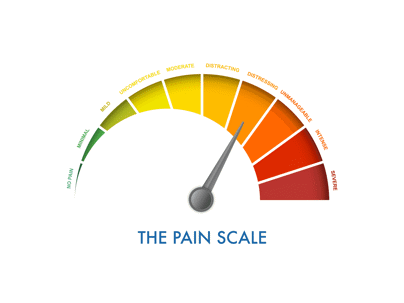Our worker’s comp attorneys in Atlanta have handled countless personal injury claims, and one of the most common questions we are asked is, “How do insurance companies calculate pain and suffering?” Simply put, there is no single correct way for insurance companies to calculate pain and suffering for personal injury cases. But there are two primary methods that most insurance providers use, which will be discussed in this article. First, let’s make sure we’re on the same page regarding the meaning of the commonly-used term, “pain and suffering.”
What Does the Legal Term “Pain & Suffering” Mean?
“Pain and suffering” refers to the monetary value assigned to physical, mental, and emotional distress that is experienced by a party filing for personal injury claims. It can refer to one acute injury or a host of injuries and side effects of those injuries — for example, a car accident that causes a broken arm and PTSD. Damages that would fall into the category of Pain and Suffering include — but are not limited to — aches, limitations on regular activities (both temporary and permanent), shortening of life, depression, anxiety, scarring, and more.
How Is Pain & Suffering Calculated?
There are two primary methods of calculating pain and suffering which are used by most insurance companies, and they are as follows:
The “Multiplier” Approach
The most popular approach to calculating pain and suffering uses a “multiplier” that is combined with the “actual damages,” which are equal to the cost of medical bills and lost wages. When insurance companies use this approach, the plaintiff’s actual damages are multiplied by a number that generally falls between one and five in order to calculate the monetary value of their pain and suffering. The more severe the injury and its consequences, the higher the multiplier will be. In the infographic below, we’ll review factors that can justify a high multiplier:

The “Per Diem” Approach
Another commonly used approach is the “per diem” approach. When insurance companies use this approach, a specific amount of money — perhaps $150 — is assigned to each day between the time of the accident and the day that the plaintiff reaches full or maximum recovery. So, if it takes 150 days to recover and the insurance company’s calculations result in $150 in pain and suffering per day, the settlement will total about $22,250 when all is said and done.
It’s important to note that evidence may be required to prove the extent of your injuries, so insurance companies can be sure that they are accurate with their pain and suffering calculations. Let us know if you have questions about calculating the cash value of pain and suffering in regards to filing a personal injury claim.
Contact our Atlanta work injury lawyers today for help filing a personal injury claim.
The post How Do Insurance Companies Calculate Pain & Suffering? appeared first on The Law Offices of Darwin F. Johnson.

